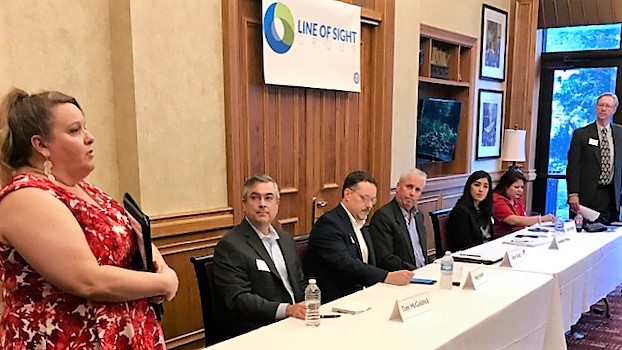Adapting your business to the post pandemic world

The return to normal is imminent. Vaccines are rolling out. Roadways, parks, stores and office buildings are bustling with activity. As we leap back to “normal,” it’s important to not simply dust off old strategies or programs designed for the pre-pandemic world. Rather, your time will be well spent evaluating the changed landscape around you to ensure your strategy is aligned with the needs of your target market.
What’s happened over the past year? In some respects, time stood still. Many corporate office desks remained untouched and long planned business strategies were put on hold in favor of quickly developed war plans to adapt to a world in pandemonium.
But what has changed? Your industry. The environment, Your competition. There may be new competitors and forces that you didn’t think about before. Your competition may have built up new strengths that bring new risks to you. Or new growth opportunities may be emerging based on the “new normal.” Regardless, all have evolved to a point where you can no longer fully rely on the old intelligence you had on them.
And so has the customer journey changed. Consumers may choose or respond to products and services differently than they did in the past. They expect more flexibility but at the same time may have more patience or understanding. Brand loyalty and spend has changed either for the good or bad depending on the industry. What they value most in a company or its products has shifted. How and what they will ultimately choose to spend their resources on may be much different.
This profound change has created new needs for businesses and a fresh look on how they approach their market.
How can you best adapt to the new post pandemic world so you can RE-FOCUS, GROW AND PROTECT your business?
- Re-evaluate the macro external forces that drive your industry. How have societal forces changed and how might those changes affect your industry and your business? What new technologies have emerged? How have economic forces changed customer perceptions? Your business may be affected by changes in regulatory, legal and environmental forces. How will you respond?
- Re-commit to a systematic and ongoing market and competitive intelligence program. Define clear responsibilities, objectives and outcomes. Build a small internal team or leverage a dedicated partner to identify and report on emerging opportunities and threats.
- Re-prioritize growth opportunities that may have been on hold for the past year and a half. Do a ‘deep dive’ analysis. Where should we play? How will we differentiate? How can we get there? Without announcing your plans to the industry (ie: through a partner) talk to customers, competitors, supply-chain players and others. Is now the time to make those growth investments?
- Re-assess your value proposition with your current customer base by conducting win/loss analysis. How have customer needs changed? Do they still buy from you for the same reasons? How have the perceptions of your brand changed? How do customers perceive your brand relative to the competition?
- Re-evaluate your strategic plan for 2022. Re-visit the pre-pandemic assumptions made about the external environment and determine how those assumptions need to change. Then update and adjust your plans using the market and competitive intelligence from the steps above.
Changes in the external environment – customers, competition and driving forces – can often represent both a threat and an opportunity. However, it is only those organizations that dedicate adequate attention and resources to understanding those changes through ongoing intelligence, analysis, action and feedback that are able to ‘outsmart’ their competition and turn threats into opportunities – and successfully take advantage of them.









